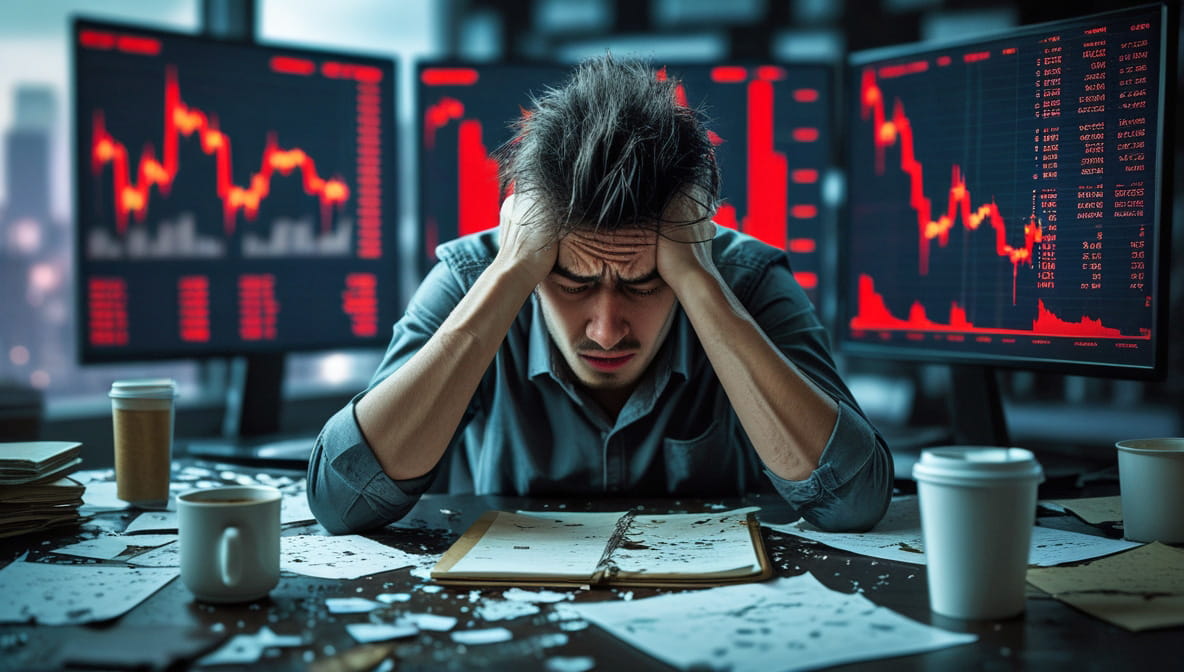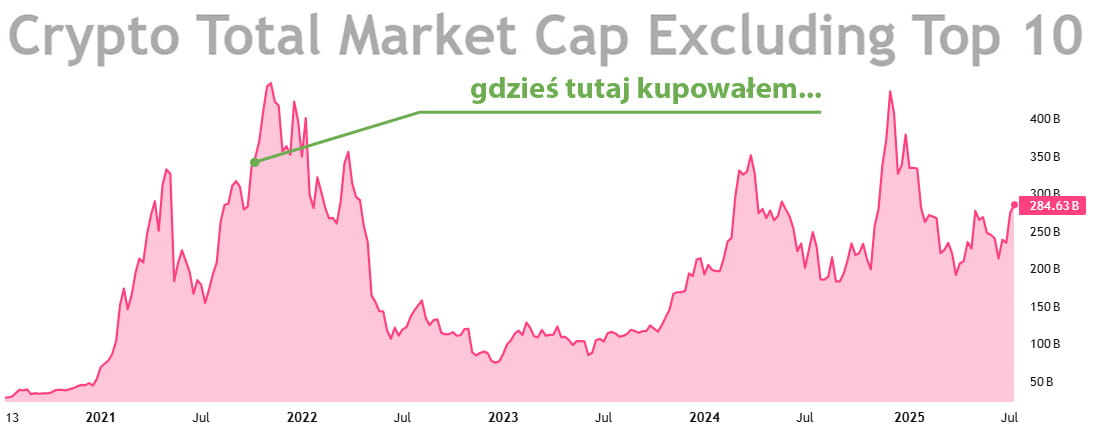If I had known in 2020 what mistakes to avoid in the crypto market, I would probably be a millionaire by now. Learning on my own, I first made money and then lost a lot of cash. Here are the 5 most important lessons that I paid for with my own cash.

Usually, the less someone knows about a given topic, the more assertive their opinions are. A priest tells how to raise children, an overweight person advertises a miracle diet, an actress discusses immigration policy. Scientists even have a separate name for this: the Dunning-Kruger effect.
A similar phenomenon exists in the cryptocurrency market. New investors think that old rules need to be thrown out the window. That since Bitcoin has grown by hundreds of thousands of percent over several years and continues to rise, it’s impossible to lose on it. Let alone on altcoins, which grow even faster!
In hindsight, I know that this is not true. Below, I give you for free 5 lessons whose understanding cost me thousands of dollars and a small apartment in Poznań. ;)
👑 Bitcoin really is the king
When I started getting interested in crypto around the end of 2020, Bitcoin seemed like a good old grandpa to me. Yes, it rose from fractions of a cent to thousands of dollars, so it provided great profits for early investors. Covid harmed it, but the halving in May 2020 once again strengthened its appeal. Well, but it's still just a retiree.
Altcoins - that’s what matters! Preferably the smallest ones, with a market cap of a few million dollars. If they do what BTC did, my $100 will turn into a million! And I’ll throw the rest of my savings into some DeFi protocol offering 1000% APY.
Well, everything worked until it didn't. After two years, half of my small altcoins lost 80%. It was even worse with DeFi protocols - the vast majority of those promising fantastic returns simply collapsed. Meanwhile, Bitcoin has never been cheaper than in 2020.
🔄 The cycle rules everything
This advice complements the previous one. It doesn't matter how good your coin is. It can be the king of the market like BTC, it can grow at a fantastic rate, it can be bought in tons by Elon Musk. When the bear market starts, none of that matters. Regardless of the prospects - it will drop, and hard.
During the previous bull run, I spotted a few sure bets. Coins that were supposed to secure my retirement. I didn’t sell them either when they started to drop, nor when the bear market had already kicked in, nor when they fell by 80%. I was a true hodler, I had diamond hands.
These are good coins and they bounced back along with others in 2023. I didn’t incur significant losses. Nonetheless, the idea of holding them in my wallet when everything is dropping was idiotic. If I had sold them at the end of 2021 and repurchased a year later, I would have five times as many as I do now.

💥 Leverage crushes the overly bold
We know this from movies and stories of old-timers. Bitcoin is on the edge, about to crash down. We bet short on 100x leverage. Within a few days, BTC indeed drops by 20%. From $1000, we just made $20,000. A Lambo will be here by next year at the latest!
Unfortunately, it’s not that good. Leverage multiplies profits as well as losses. If we have such a short position and BTC first rises by 3% and then drops by 20% - we’re cooked. We no longer have the short position; it was closed after the rise. A similar situation applies to leveraged longs, which can be closed on a momentary pullback before the price moves up.
Conclusion - don’t touch leverage until you learn to play well in the spot market. And even then, be careful with the size of the leverage. I know risk-takers playing even 1:125, but for me personally, 1:10 is the maximum.
🤑 Greed does not pay off
We don’t even need to play with futures to end up getting burned. We can incur significant losses in the spot market as well if we have unrealistic expectations.
I felt it firsthand during the bull run of 2020-21. It was an incredible time - practically every coin was rising by 50, 100, 200, 500 percent! It was enough to wait two months to multiply the initial investment several times.
Unfortunately, a winning streak lasting several months dulls our vigilance. Instead of gradually reducing the position, we have completely distorted expectations. Even reasonable people start to believe that making 10 zlotys from every zloty is just a matter of time.
The remedy is to create an investment plan and stick to it. Counting on a 10x increase, let’s leave at most 10-20% of coins in the wallet, systematically selling the rest. And of course, it’s also worth having an emergency exit if the coin behaves differently than we thought.
🏦 An exchange is not a bank
A beginner's mistake that I made myself. What is it? Holding funds on an exchange longer than necessary to buy or sell cryptocurrency. Especially if it is a small exchange, let's say outside the Top 10.
By transferring our funds to an exchange, we lose control over them. Their withdrawal is now dependent on its goodwill. Generally, this isn’t a problem, but the situation can change rapidly if it runs into trouble.
Although exchanges are becoming more secure, a hacking attack is always possible. In the case of small exchanges, it can have catastrophic consequences. While Bybit or Binance will likely survive it and may even refund losses, smaller exchanges could lose control of the situation.
I write this as a former client of two such exchanges, Bilaxy and Hotbit. One froze over 50% of my assets forever, while the other prevented exchanges and imposed a prohibitive fee of $50 for withdrawing each asset separately.
🎯 Summary
Of course, this is not a complete list of my mistakes. Succumbing to FOMO, ignoring opportunities, lack of diversification, storing 100% of funds in hot wallets... The crypto market allows for substantial profits, but it is a real trap for the careless.
💡 Remember: The most expensive lessons in the crypto market are those paid for with your own cash! 💰

AntiTrader
Fundamental analysis of crypto. Blockchain, Web3, DeFi, hardware. I write for Gieldomania.pl
